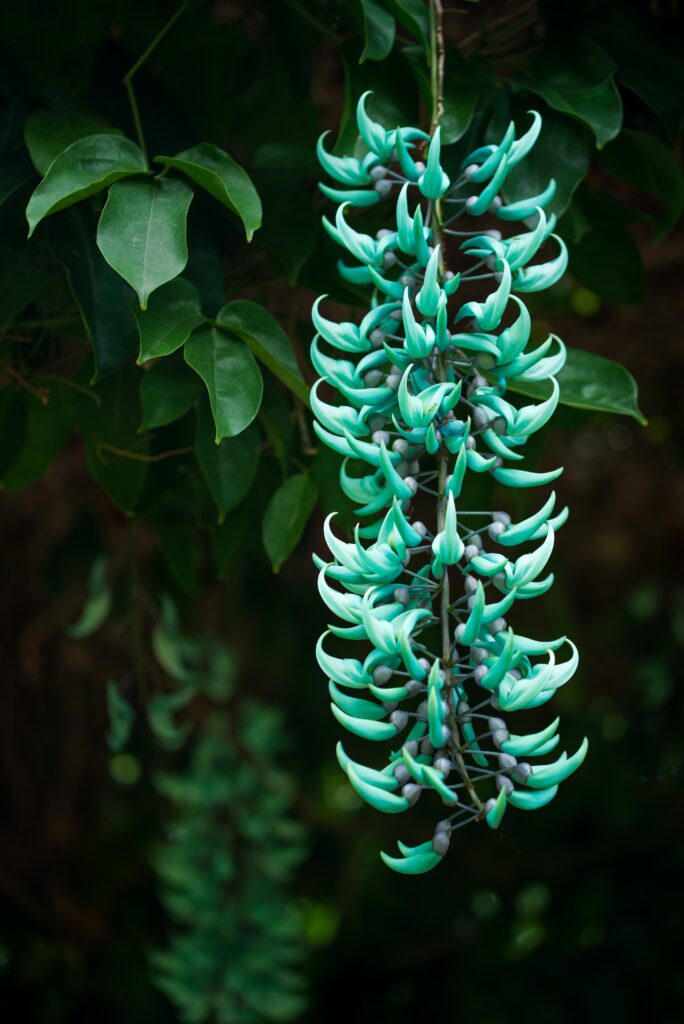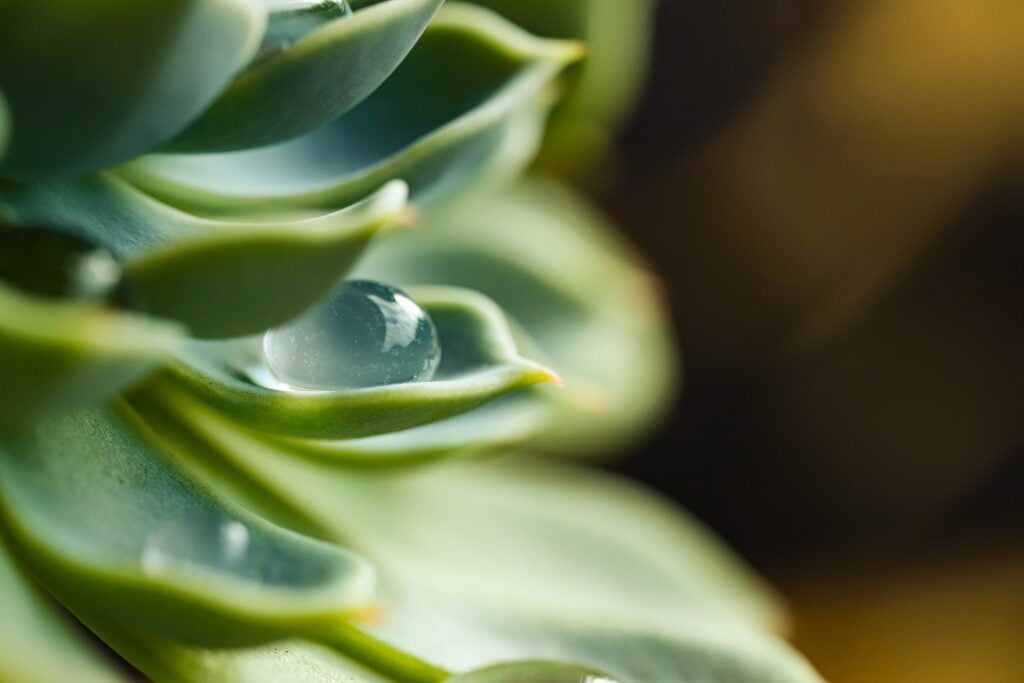Jade, a beautiful and enigmatic gemstone, has long held a special significance in Asian cultures. From ancient times to the present day, Asians have adorned themselves with jade, cherishing it not just for its beauty, but for its symbolic meaning and spiritual properties. This enduring tradition is deeply rooted in the belief that jade brings good fortune, wisdom, and protection against negative energies. Whether it’s an elegant pendant, a delicate bracelet, or intricately carved ornaments, wearing jade is more than just a fashion statement for Asians – it is a way to connect with their cultural heritage and embrace the mystical allure of this revered stone.

This image is property of images.unsplash.com.
The Historical Significance of Jade in Asian Culture
Jade’s presence in ancient civilizations
Jade holds a prominent place in the history of Asian civilizations, dating back thousands of years. In ancient China, jade was believed to possess mystical powers and was associated with immortality. Emperors and nobility adorned themselves with intricate jade ornaments, and it was even placed in tombs to protect and guide the deceased in the afterlife. Similarly, ancient Mayans and Aztecs in Central America revered jade for its spiritual significance, using it for ceremonial objects and jewelry.
Jade as a symbol of power and wealth
Throughout history, jade has been closely tied to power and wealth in Asian cultures. In China, owning exquisite jade pieces signified a person’s social status and brought honor to their family. Emperors would often wear jade to symbolize their divine authority, and it was even used as a form of currency during certain times in history. The rarity and beauty of jade made it highly coveted by the elite, displaying their wealth and influence.
Jade in religious and spiritual practices
Jade’s connection to spirituality and the divine can be traced across numerous Asian religions and spiritual practices. In Buddhism, jade is seen as a representation of perfect virtue and purity, believed to inspire wisdom and spiritual growth. Taoism considers jade as one of the five essential elements, representing longevity and nurturing positive energies. The Greenstone Koru symbol of the indigenous Maori people in New Zealand also alludes to the spiritual significance of jade, representing new beginnings and the continuous cycle of life.
The Cultural Symbolism of Jade in Asian Countries
China: Jade as a symbol of good luck and prosperity
In Chinese culture, jade is regarded as a symbol of good luck and prosperity. It is believed to bring abundance and protect against negative energies. During important celebrations such as the Chinese New Year and weddings, jade jewelry and ornaments are worn to invite blessings and good fortune. The color green, commonly associated with jade, also represents harmony and balance, contributing to its positive symbolism in Chinese culture.
Japan: Jade’s association with purity and protection
In Japan, jade is linked to purity and protection. Known as “Hisui” or “the stone from heaven,” jade is highly regarded for its ability to ward off evil spirits and bring good fortune. It is often used in prayer beads, amulets, and statues of deities to invoke spiritual protection and foster a sense of inner peace. Additionally, jade is considered a symbol of strength and longevity, reflecting the values and aspirations of Japanese society.
Korea: Jade’s significance in Korean folklore
Jade holds a special place in Korean folklore and mythology, representing various aspects of Korean culture and values. In Korean legends, jade is believed to possess healing powers and can ward off misfortune. It is often associated with the mythical figure known as the Jangseung, a guardian spirit that protects villages and brings prosperity. The practice of carving jade into intricate designs, such as dragons and lotus flowers, is deeply rooted in Korean artistic traditions.
India: Jade as a representation of wisdom and inner peace
In India, jade is seen as a symbol of wisdom and inner peace. It is associated with spirituality and is believed to enhance meditation and mindfulness. Jade is often used in Indian traditional medicine systems such as Ayurveda, where it is believed to have a calming effect on the mind and body. The deep connection between jade and spirituality in Indian culture is reflected in the intricate carvings and religious artifacts made from jade.
The Healing Properties of Jade in Traditional Asian Medicine
Jade’s use in acupuncture and acupressure
Traditional Asian medicine, including Chinese and Ayurvedic practices, recognizes the healing properties of jade. In acupuncture and acupressure, jade is used as a tool to stimulate specific points on the body. The coolness and smooth texture of jade are believed to have a calming effect on the nervous system, promoting relaxation and balance. It is believed that using jade during these therapy sessions can help enhance the flow of vital energy, known as qi.
Jade’s cooling and soothing effects on the body
Jade is valued for its cooling properties, particularly when it comes into contact with the skin. In ancient times, jade was used by Chinese empresses to maintain their youthful appearance and skin elasticity. Even today, jade rollers and facial masks made from jade are used in skincare routines to promote blood circulation, reduce inflammation, and give the skin a radiant glow. The soothing effect of cool jade on the body is also said to alleviate headaches, relieve tension, and promote better sleep.
Jade’s believed ability to attract positive energy
According to traditional beliefs, jade possesses the ability to attract positive energy and dispel negativity. In feng shui, the ancient Chinese art of arranging spaces harmoniously, jade is often used as a decorative element to bring balance and abundance into one’s surroundings. Placing jade ornaments or sculptures in specific areas of the home or workplace is believed to create a harmonious environment and invite good luck. This belief extends to wearing jade jewelry, as it is thought to attract positive energies and protect the wearer from harm.
Jade as a Fashion Statement in Contemporary Asian Society
Jade as a symbol of social status
In contemporary Asian society, jade continues to hold a significant place as a symbol of social status and prestige. Wearing jade jewelry is still considered a sign of wealth and refined taste. Whether it be a jade pendant, bracelet, or earrings, these exquisite pieces are worn as fashionable accessories that reflect a person’s sophistication and discerning style. Jade’s timeless elegance has made it a sought-after choice among fashion-conscious individuals, both in Asia and around the world.
Jade jewelry and accessories in modern fashion trends
With the fusion of traditional and modern influences, jade jewelry has become a staple in contemporary fashion trends. Asian designers and fashion houses have incorporated jade into their collections, showcasing its versatility and unique aesthetic appeal. Jade’s vibrant green color and smooth texture make it a versatile gemstone that complements both traditional and modern outfits, adding a touch of elegance and luxury to any ensemble. From statement necklaces to delicate jade rings, these pieces have become fashion statements that celebrate Asian heritage and craftsmanship.
Jade’s versatility in complementing various outfits
One of the reasons for jade’s enduring popularity in the fashion world is its ability to complement a wide range of outfits and styles. Whether it be a casual daytime look or an elegant evening gown, jade jewelry effortlessly adds a touch of sophistication. Its natural green hue pairs well with neutral tones, such as black, white, and beige, creating an effortlessly chic ensemble. Additionally, jade’s smooth texture and cool feel on the skin provide a sense of comfort and tranquility, enhancing the overall look and feel of an outfit.

This image is property of images.unsplash.com.
The Importance of Jade in Asian Weddings and Celebrations
Jade’s role in traditional wedding customs
Jade plays a significant role in Asian weddings, symbolizing purity, love, and commitment. In Chinese weddings, jade jewelry, such as bangles, bracelets, and hair ornaments, is often worn by the bride to bring good luck and protection. Jade is also frequently incorporated into wedding gifts, representing blessings for a blissful and long-lasting marriage. Similarly, in other Asian cultures, such as Korea and Japan, jade is believed to bring prosperity and harmonious relationships, making it an integral part of wedding ceremonies and celebrations.
Jade as a meaningful gift for special occasions
Jade is a popular choice for meaningful gifts during special occasions such as birthdays, anniversaries, and important milestones. The significant cultural associations with jade make it a highly treasured and thoughtful present. Gifting jade jewelry or accessories signifies a wish for the recipient’s well-being, prosperity, and happiness. The sentimental value attached to jade gifts makes them cherished keepsakes passed down from generation to generation, symbolizing enduring family bonds and traditions.
Jade’s association with longevity and happiness
Jade’s connection to longevity and happiness is deeply rooted in Asian culture. In various Asian countries, jade is believed to possess the power to bring good fortune, ward off negative energies, and promote a long and fulfilling life. This symbolism is particularly relevant during celebrations of special milestones, such as birthdays or the birth of a child. By gifting jade, individuals express their sincere wishes for the recipient’s well-being, longevity, and happiness, affirming the positive cultural significance of jade in Asian societies.
Jade Mining and Production in Asia
Major jade-producing countries in Asia
Asia is renowned for its rich jade deposits, with several countries being major producers of this precious gemstone. Myanmar (formerly Burma) holds the title as the world’s primary source of high-quality jade, particularly the famous “imperial jade” also known as “jadeite.” Other Asian countries renowned for their jade mining include China, Russia, Kazakhstan, and Indonesia. Each region boasts unique variations of jade, displaying diverse colors, translucency, and mineral compositions.
Traditional and modern techniques for mining jade
Jade mining in Asia encompasses a blend of traditional and modern techniques. Traditional methods involve manual labor, with miners using basic tools to extract jade from rock formations or riverbeds. This labor-intensive process requires skill, patience, and a deep understanding of the geology of jade deposits. In contrast, modern mining techniques involve the use of advanced machinery, such as bulldozers and excavators, to extract jade from larger mining sites. However, there is growing concern about the environmental impact of industrial-scale mining practices.
The impact of jade mining on the environment
The growing demand for jade has led to increased mining operations across Asia, resulting in various environmental challenges. Large-scale mining activities can cause soil erosion, deforestation, and the depletion of natural resources. Additionally, the use of heavy machinery and chemicals in the mining process can lead to water pollution and habitat destruction. Recognizing these concerns, responsible mining practices are being encouraged, including strict regulations on mining operations and the promotion of sustainable mining techniques to minimize the environmental impact.
The rise of synthetic jade in the market
In recent years, the rise of synthetic jade has had a significant impact on the jade market in Asia. Synthetic jade, also known as cultured jade or man-made jade, is created in laboratories using advanced technology to mimic the natural properties of jade. While synthetic jade may lack the historical and cultural significance of natural jade, it offers an affordable alternative for those who admire the beauty and symbolism of jade but have budget constraints. The presence of synthetic jade has sparked debates about the authenticity and value of jade in the market.

This image is property of images.unsplash.com.
The Value and Appreciation of Jade in the Art Market
Famous jade artifacts in museums and collections
Jade artifacts have long captivated art enthusiasts and collectors around the world. Museums showcase exquisite jade pieces that highlight the exceptional craftsmanship and artistic prowess of ancient Asian civilizations. The National Palace Museum in Taipei, Taiwan, houses an extensive collection of imperial jade carvings and sculptures, including the legendary “Ruyi scepter” and “Jadeite Cabbage.” The British Museum in London, England, also features remarkable jade artifacts, such as the intricately carved jade “Bi disc” from ancient China.
Jade as a medium for artistic expression
Jade’s unique characteristics and cultural significance have made it a favored medium for artistic expression in Asia. From delicate carvings to intricate sculptures, artists utilize the natural beauty and translucency of jade to create breathtaking works of art. Jade sculptures often depict mythological creatures, symbolic motifs, and nature-inspired elements. The meticulous attention to detail and the skill required to work with this precious stone make jade artwork highly valued and sought after in the art market.
Investing in jade as a form of asset diversification
Beyond its cultural and artistic value, jade has also become an investment opportunity for individuals seeking to diversify their assets. Jade’s scarcity and enduring popularity have translated into its steady appreciation in value over time. Collectors and investors recognize the potential for long-term growth in the jade market, particularly for rare and high-quality specimens. However, investing in jade requires careful research, discernment, and consultation with experts to ensure authenticity and ascertain the market’s fluctuations.
Jade Superstitions and Taboos in Asian Culture
Beliefs surrounding the color and quality of jade
Superstitions surrounding jade in Asian cultures often revolve around the color and quality of the stone. In Chinese culture, the most valuable and cherished type of jade is a vibrant, translucent green known as “imperial jade.” It is believed to possess the greatest power and protective properties. In contrast, pale or cloudy jade may be viewed as less desirable and associated with ill fortune. Similarly, the color and clarity of jade play significant roles in the beliefs and superstitions surrounding jade in other Asian countries.
Avoiding certain combinations of jade with other materials
In Asian cultures, certain combinations of jade with other materials are believed to bring bad luck or negative energy. For example, the combination of jade and pearls is considered inauspicious, as it is believed to represent tears and sorrow. Similarly, combining jade with red ink or writing characters in red on jade is avoided, as red is associated with negative connotations, such as blood or danger. These superstitious beliefs are deeply ingrained in cultural customs and are still observed by many individuals today.
Jade’s association with attracting or repelling spirits
Jade’s association with attracting or repelling spirits is prevalent in Asian superstitions. In some cultures, jade is believed to possess the ability to attract benevolent spirits and bring good fortune. On the other hand, some superstitions consider certain forms of jade, such as carved animal figures or masks, to possess the power to repel evil spirits or negative energies. These beliefs contribute to the use of jade in religious practices and the incorporation of jade ornaments in homes and sacred spaces.
The Evolution of Jade Traditions in Asian Communities
Adapting traditional jade practices to modern lifestyles
Traditional jade practices have evolved over time to adapt to modern lifestyles while still preserving cultural significance. In response to changing preferences and trends, contemporary designers have found innovative ways to incorporate jade into everyday accessories and home decor items. For example, jade pendants may be reimagined as contemporary minimalist designs, making them accessible to a wider audience. Furthermore, the appreciation and awareness of the symbolic meanings of jade in Asian traditions continue to be passed down through generations, ensuring its longevity in cultural practices.
Incorporating jade into multicultural societies
As Asian communities become more multicultural and dispersed around the world, the significance of jade extends beyond traditional contexts. Jade’s beauty and symbolism transcend cultural boundaries, captivating individuals from various backgrounds. In multicultural societies, jade is often celebrated as a symbol of diversity, cultural heritage, and artistic expression. It serves as a bridge between different cultures, fostering understanding and appreciation for the rich traditions associated with jade in Asian communities.
Preserving and promoting jade craftsmanship
Efforts to preserve and promote jade craftsmanship are essential in ensuring the continuation of this cultural heritage. Organizations and institutions dedicated to jade arts and crafts are working to train and support artisans in their craft, passing down traditional techniques and knowledge. By celebrating jade as an art form, these efforts contribute to the maintenance of cultural identity and the appreciation of the intricate artistry involved in creating jade masterpieces. International collaborations and exhibitions also play a vital role in showcasing the beauty and cultural significance of jade to a global audience.
Jade’s Influence on Asian Popular Culture and Media
Jade as a subject in literature and poetry
Jade’s allure and significance have permeated Asian literature and poetry for centuries. Poets and writers often use jade as a metaphor for beauty, elegance, and everlasting love. Classic literary works, such as “Dream of the Red Chamber” in China and “The Pillow Book” in Japan, incorporate jade as a central theme, emphasizing its cultural and emotional resonance. Contemporary literature continues to draw inspiration from jade’s symbolism, allowing it to remain a cherished literary motif in Asian popular culture.
Jade’s portrayal in movies and television
The cultural significance of jade is not lost in the world of movies and television. Jade frequently appears as a pivotal element in storytelling, both in historical dramas and modern-day narratives. It is often used to symbolize fortune, power, and love. Movies like “Crouching Tiger, Hidden Dragon” and “Curse of the Golden Flower” showcase jade’s visual splendor, while television series like “Jade Palace Lock Heart” explore the mystical and romantic undertones associated with jade. These visual representations in popular media further cement jade’s role as a beloved symbol of Asian culture.
The role of jade in Asian folklore and myths
Jade’s significance in Asian folklore and myths is deeply embedded in the cultural fabric of these societies. Tales featuring magical jade artifacts or creatures are prevalent across Asian folklore. For example, in Chinese mythology, it is believed that a divine bird called the “Pixiu” turned into jade to protect and bless those who possess it. These mythical stories featuring jade reflect the reverence and symbolism associated with the gemstone, fostering a sense of wonder and enchantment in Asian popular culture.
